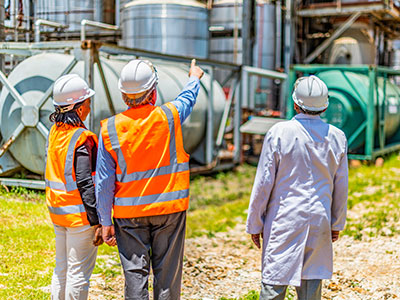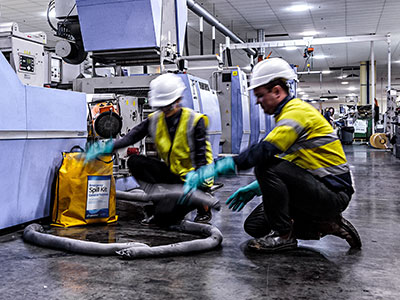
Do I need a Spill Response Plan?
In Australia it is a legal requirement for all organisations to have an emergency plan in place under the model Work Health and Safety (WHS) laws. If your workplace handles or stores hazardous liquids, this would include having a spill response plan to contain and manage spills. It’s important to understand what to do in the event of any liquid spill because of the close links with occupational health and safety, duty of care and environmental protection. Let’s take a closer look to understand what a spill response plan is and how it could help in protecting the environment, workers and your organisation from costly fines and loss of earnings.
What is a Spill Response Plan?
A spill response plan is made up of several key components, which often include:

- Identification and Reporting involves training workers to identify that a spill has occurred, what type of liquid has been spilled and who it should be reported to, either internal or external.
- Protecting workers and the environment – PPE such as gloves and safety glasses can help to keep workers dealing with the spill. Always consult the spilled liquid’s Safety Data Sheet for appropriate PPE and handling requirements..
- Containment and clean up – after identifying and reporting the spill, it’s time to clean it up. Encircling the spill with absorbent socks or booms will stop it from spreading further. Absorbent pads and granules can then be used to clean up the remainder of the spill.
- Regular Training is essential and can sometimes be overlooked. Do all workers know how to respond to a spill or how to use a spill kit? Training plays a key role in any spill response plan.
- Review and update – Changes to legislation, changes to the liquids used and stored onsite can affect best practice spill control. It is important to be aware of any changes and update your spill response plan accordingly.
So whether you work in mining, civil construction, waste management, heavy machinery or transport, spills can occur from a variety of sources. When you’re dealing with a leak, spill or accident, having a well-planned and executed spill response plan is crucial to minimise the environmental and health consequences of a spill.
What are the WHS Regulations for Spill Management?
To summarise the model WHS regulations on containing and managing spills, a person conducting business activities must ensure so far as reasonably practicable, that where there is a risk of a hazardous chemical spill or leak that provision is made for its containment. The person must also ensure that the storage containment system does not create a hazard by bringing together incompatible hazardous materials. The spill containment system much provide for the cleanup and disposal of any resulting hazardous chemical spill. Failure to perform any of the above carries a penalty of up to $6,000 for an individual and $30,000 for a corporation.
Top Reasons for Having a Spill Response Plan

Preventing Environmental Damage is one of the most obvious reasons to have a spill response plan in place. Getting it wrong could result in pollution, fines and reputational damage. Your plan should consider proximity to drains, potential soil and water contamination.
Occupational Health & Safety is paramount for organisations. Many chemicals and fuels are toxic and dangerous when handled or stored incorrectly. A spill response plan can help to mitigate these risks and keep workers safe while cleaning up spills.
Effective spill response planning is crucial for maintaining workplace productivity. By ensuring staff are properly trained to execute the plan, downtime and lost productivity are minimised. Failure to do so can lead to costly shutdowns, causing significant financial loss to the organisation.
So there you have it – we hope you’ve found this article interesting and now have a good understanding of how a spill response plan could help your organisation protect people and the environment. If you’re looking to make improvements in this area, we can help. Stratex supplies a wide range of spill kits, bunded spill containment and hazardous storage cabinets. We also offer best practice spill control training programs. Contact us to discuss your specific requirements or to arrange a free site inspection today.









